Generic article
Guest blog Arctic: Sketching with sunlight by Udo Prinsen
Guest Blog by artist Udo Prinsen, who made very special pictures during the SEES expedition to Svalbard with "solargraphy". He describes the work of the scientists and adds unique images to the stories. In solargraphy, solar tracks can be directly recorded through a lensless pin-hole camera and ‘written’ on to light sensitive paper. The images in this project have been exposed from several hours to just over 2 months and a few as long as 6 months. In June 2016, an exhibit will be on display in the City Hall in the centre of Utrecht.
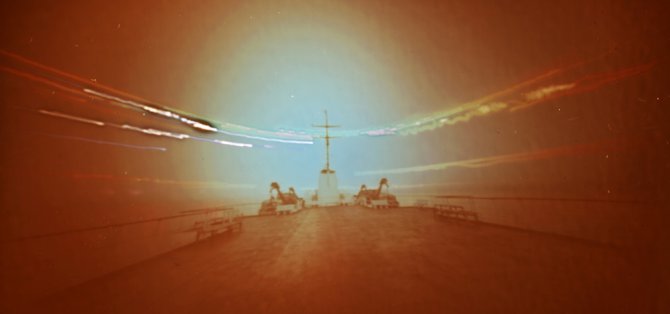
Work never stops
Someone I regularly see late nights in the bar is social scientist Machiel Lamers of Wageningen University. He was telling me that it's difficult for him to 'stop' working as his subject matter is more or less the expedition itself. Machiel and his colleague Linde van Bets are studying the way things are running on Ortelius, the expedition’s vessel. The way that tourism practices and science practices interact and collide, including the relations between scientists and tourists, the expedition leaders, the captain and the crew, it is all of interest to them. At the same time this is information useful for both the organization and the tour operator Oceanwide Expeditions. Where some of the other scientists are only capable of collecting data for one or two days, this research never stops Machiel says and it is difficult to switch it off during conversations in the bar.
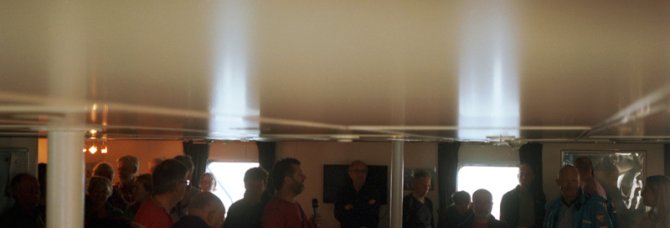
Sit down and observe
For today I would like to stay in one place on shore. Not walking around, not visiting different scientists in the field. I'd like to sit down and just observe, do my own work which is to draw and create some pin-hole solargraphs. An excellent science team from IMARES Texel do just that. I call them the Walrus people. Last night I heard from Sophie Brasseur that they are going to study yet another group of Walrus. They have become my favourite animals on this journey since I saw them up close the other day and I’d like to get to know them a little better.
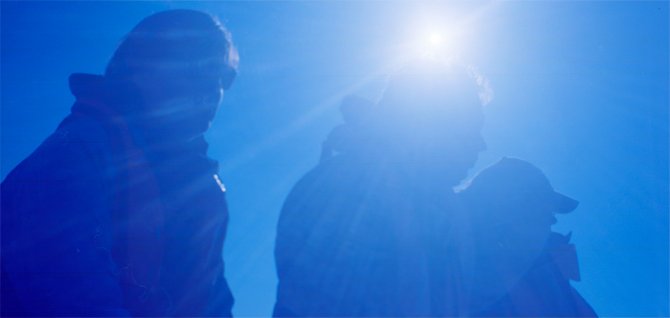
Polar bear!
We’ve just entered the boat when we hear 'Polar bear' on the radio. And there's a brief moment of disappointed faces looking at each other. But only very brief as I am with one of the most positive group of the entire expedition. This is a tough group that takes turns counting wildlife from a cold little box on the front of the ship 24 hours a day. They keep track of mammals and anything that moves within a certain area. Pretty tough when the weather is windy, wet and cold. So these guys cannot be put off by anything, they shrug their shoulders and speak out : "Well, then we'll study them from the water".
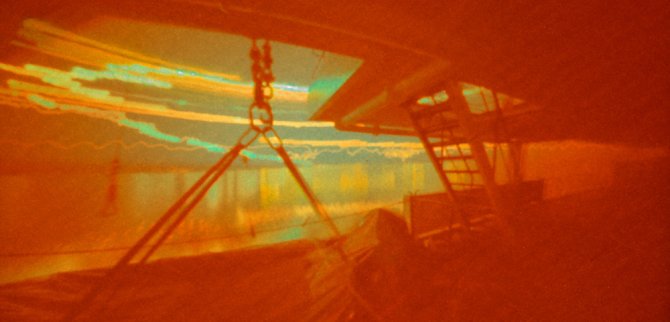
Stay positive
The positive attitude has its effect on me and I can actually do a bit of work from the zodiac. I was going to put some pin hole cameras to record the landscape for the entire time that we would be in one place observing wild life. Now, I also shrug my shoulders and decide to take images of ourselves from within the zodiac. We plant a few of my cans onto a steady place in the zodiac and open the shutter. It will be there for a few hours while we float from place to place, so hopefully it will bring an interesting result. It is a wild guess, but it's fun to try out and better try than not do anything at all.

Walrus frenzy
The Walrus look amazing. They are playing around us in the water in small groups and a large group is on the shore of a peninsula together with their young. The heat of their bodies is vaporised into steam coming off the group. It looks like they are relaxed and sleeping. All of a sudden there is a stir. Something made them feel enclosed and the group starts moving towards the water. The snoring sounds they now produce is immense, intense, loud. it actually does look quite dangerous for the smaller young animals. It's anyone for themselves at this point and no animal looks for its neighbour. What or who's in the way has got to move quickly or it will be overrun.
Sailing laboratory
I take some time to explore the laboratory on Ortelius. The domain that many scientists use as storage room for their samples and instruments, but there is also live research going on by the people of Imares. Martine van de Heuvel-Greve of IMARES Yerseke and Andrea Sneekes of IMARES Den Helder are looking at small marine life named in ways I could never remember: Apherusa glacialis, Lysianassidae spec., Gammarus setosus and Lepidurus arcticus, most of them being small insect like. But the one that is most dazzling to me is the Limacina helicina, a sea butterfly. At first glimpse nothing too spectacular, similar to a small tad pole fish, but if you look closely there are beautiful transparent colours in its wings and the way it moves around is magical.
Animal behaviour
Martine and Andrea are performing tests to see in what ways our human influence may affect different species and the possible effects this has to other marine wildlife. I have to say, at first I was a little bit shocked myself to learn that these friendly scientists in fact will have to perform some life threatening tests on these beautiful little creatures but it really is for the greater good, they assure me. We need to know how they operate in order to be able to protect them. Life in the Arctic seas may have more influence on life above water than we imagine.
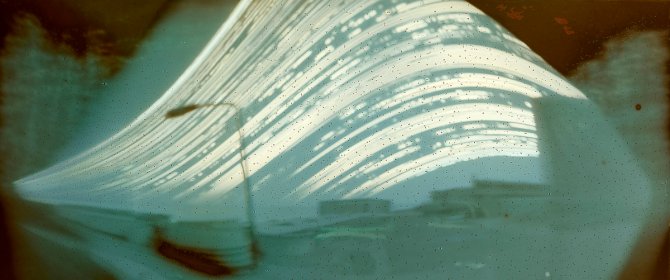
mayank
Solar rooftop is solar panels placed on top of roofs of commercial, institutional or residential buildings. They capture the light energy emitted by the sun and convert it into electrical energy. This setup is also known as a <a href="https://www.loomsolar.com/blogs/reviews/list-of-top-rooftop-solar-installation-company-in-india">rooftop solar</a> photo-voltaic system. It produces a clean, Eco-friendly form of energy, meaning that it’s which does not produce any type of pollution or harmful gases.
Reactloomsolar
A solar system (with a battery system) of up to 10kW in a capacity that is installed at homes qualifies to be a residential solar system. https://www.loomsolar.com/collections/dealers-distributor-business-opportunities-in-india The investment would be somewhere around Rs. 1,00,000 per kW. The electricity bills of a home are generally Rs. 1,000 per month. Installing a solar system in such an establishment could result in savings of Rs.8,400 per annum. The investment is expected to have an RoI (payback period) of ~10-11 years and the return on investments will be around 8%.
React